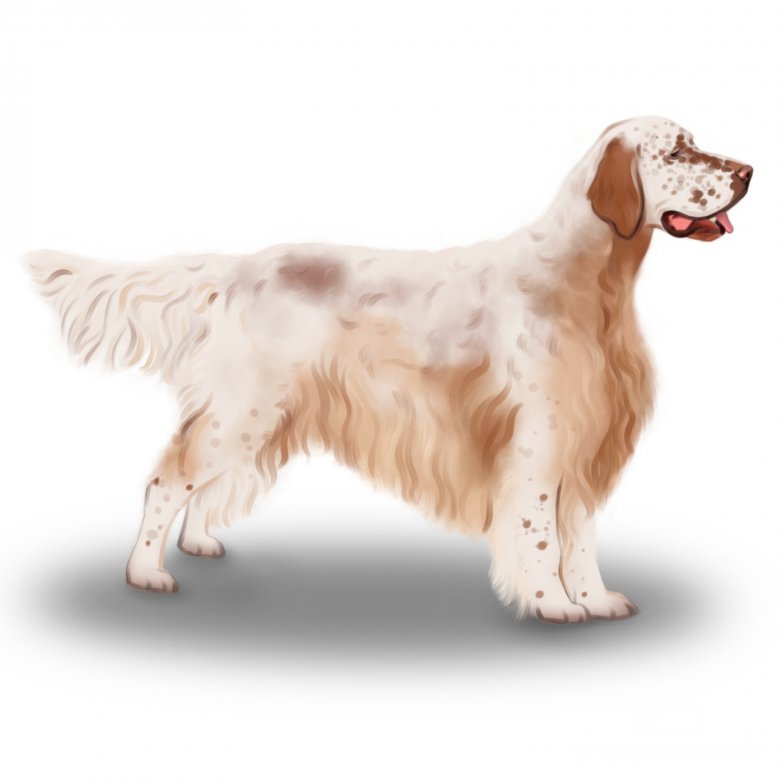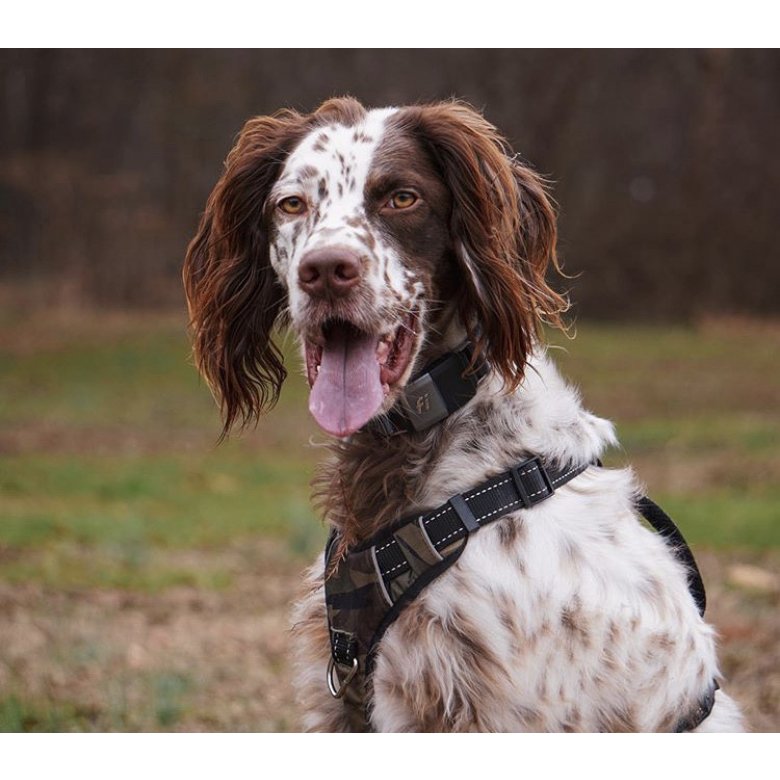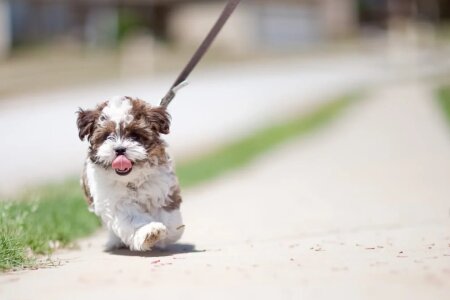The elegant English Setter, recently put at risk for extinction, is now one of the most popular breeds in the UK thanks to its beautiful appearance and well-mannered temperament. Its owners can attest to their superb characteristics that make them one of the most well-loved companions for families and first-time owners. This breed of gun dog was bred for hunting, which makes them intelligent and thus loyal and loving companions. Boasting high endurance, agility, and of a gentle but sometimes mischievous disposition, the English Setter is a well-rounded breed. English Setter puppies are an ideal choice for just about any family, regardless of whether or not they’re used as hunting dogs.
Why English Setters are Great
Some highlights of English Setters:
Loyalty: English Setters are affectionate, loving, and loyal companions.
First-time owners: owing to their gentle personality and intelligence, this breed is an ideal puppy choice for first-time owners.
Child-friendly: English Setters get along well with children of all ages.
Playful: this breed enjoys playing and will get plenty of exercise playing with children and owners.
Intelligent: English Setters are well-reputed for their superb intelligence.
Things to Consider when Looking at English Setters for Sale
Some downsides to the English Setter:
Maintenance: grooming and frequent shedding results in English Setters being more high-maintenance than most other breeds.
Drooling: English Setters are known to drool, creating messy clothes and furniture around the house.
Chewing: as puppies, English Setters may nip and chew whilst playing.
Digging: this breed can make an awful mess digging up flowerbeds and gardens if left unsupervised.
History of the English Setter
Setters date back to at least the Renaissance period, where they were popularly used for hunting game. English setting dogs were used for hunting birds for at least 400 years, particularly by the aristocratic class. The setter’s main role, setting, is a complex task requiring coordination between the setter and its owner during the hunt. The setter makes its way towards the bird then alerts the hunter once it has entered position, at which point the hunter can set a trap and signal the Setter to chase the bird towards the trap. Consequently, this breed of dog has an affinity to working with people. The English Setter is amongst the oldest of these types of gun dog setter breeds, but their numbers began to fall off with the advent of gunpowder weapons as the preferred means of hunting. In 2012, the Kennel Club of Great Britain recognised the English Setter as a vulnerable breed, but it has since recovered in numbers and skyrocketed in popularity.
Appearance
The English Setter can be recognised by its elegant appearance and graceful trot. This breed has a clean outline that exudes strength, endurance, and agility simultaneously. Their heads are large and held up proudly while their eyes are big and confident. Another defining feature of the English Setter is its long, silky coat of fur which complements the short to medium-length coat of bodily fur. This ‘feathering’ adorns the ears, neck, belly, hind legs, and behind the front legs and gives the Setter a fluffy look that’s often groomed for dog shows or by the preference of owners.
How big is the English Setter?
English Setters are large-sized dogs. Males grow on average to 65 cm in height, whilst females can grow up to 62 cm high.
How heavy is an English Setter?
Fully-grown adult male English Setters weigh between 25-36 kg on average, whilst females weigh between 20-32 kg.
What colour is the English Setter?
There are many variations to an English Setter’s coat colour. Their fur is typically white with differently-coloured ticks, referred to as belton. The Kennel Club of Great Britain recognises many colours, but a few of the more common coat colours are as follows:
Blue belton: white with black flecks;
Orange belton: white with orange flecks;
Lemon belton: white with orange flecks and a lighter-coloured nose;
Liver belton: white with liver flecks;
Tricolour: blue or liver belton with tan markings.
It should be noted that English Setter puppies take some time to develop their characteristic markings.
Temperament
A true gentleman by nature, the English Setter is well-mannered and behaves quite well around owners, families, and strangers. A downside to their temperament, however, is that they can be mischievous and strong-willed at times. The good news for owners is that this behaviour can be reduced with proper training and socialisation as a puppy. English Setters are a popular choice for first-time puppy owners, and for good reason. Their kind and gentle disposition, paired with high intelligence and playful excitement make them an ideal pet that can become loyal and loving companions for life.
Do English Setters make good guard dogs?
This breed is not renowned for its ability to perform watchdog or guard dog duties. They can alert owners to suspicious activity, but they will likely keep their distance and bark rather than engage in aggressive behaviour.
Do English Setters bark a lot?
English Setters do bark occasionally and may bark compulsively if neglected or overly alerted or excited. They may also howl from time to time.
Are English Setters easy to train?
This breed can be easy to train. English Setters are intelligent and loyal, so they can associate with commands without too much repetition and can become obedient pets. They should, however, be trained carefully as puppies to encourage proper obedience and behaviour.
Are English Setters playful?
English Setters are certainly playful, especially as puppies. Games and exercises that are interactive and test their agility will keep them happy and healthy.
Are English Setters good with children?
Few dog breeds get along better with children than English Setters. They are playful, loving, and affectionate with children of all ages.
Are English Setters good with other pets?
Although English Setters have a prey drive, they are capable of getting along well with other pets. They get along well with all types of pets provided that they’ve been introduced and have the opportunity to become accustomed to each other.
Can I leave an English Setter alone?
English Setters can tolerate moderate periods of isolation from owners and family. This shouldn’t be taken for granted, however, especially as puppies where they ought to receive plenty of attention and care.
Do English Setters like water?
This breed tends to enjoy swimming and enjoys being on boats. Always ensure that your English Setter is introduced to water on their own terms, however.
Health
How long do English Setters live?
Generally, English Setters are expected to live anywhere from 11-15 years.
How much exercise does an English Setter need?
This breed requires plenty of exercise to maintain physical and mental stimulation. Try to provide them with at least two hours per day of exercise, which could include an hour of walking and an hour of rigorous outdoor play in the garden or at a park.
What are English Setters’ common health issues?
English Setters are prone to some specific health issues that should be noted. Some examples are:
Hip dysplasia;
Deafness;
Autoimmune thyroiditis;
Cancer.
There are two specific conditions that should be noted for prospective English Setter owners. ‘Dead tail’ is a common condition that affects this breed after bathing or swimming and can be painful since it paralyses the dog’s tail without allowing it to rest comfortably. If this persists for more than two days, contact a veterinarian. Occipital bumps behind the English Setter’s relatively large head can also be injured whilst playing and lead to internal bleeding, which can create uncomfortable lumps behind the head. Apply ice to the wound to relax the swelling and to ease the pain.
Care
How much space do I need for an English Setter?
English Setters require plenty of space and are best suited for large houses and rural environments where they can play and roam freely. They should not be considered for apartment dwelling.
What should I feed my English Setter?
Fully-grown English Setters should be fed 4 to 5 cups of high-quality dry food per day, divided into two meals. Puppies can be fed less and should have their diets adjusted according to their physical activity and to reduce overfeeding.
How much grooming do English Setters need?
This breed requires a high amount of grooming and maintenance. Their feathered coats can easily become tangled, which makes regular brushing a challenge. If the feathered coat grows too long, it should be trimmed by a professional groomer. Try to have English Setters groomed every season.
Do English Setters shed?
English Setters shed a moderate amount of hair. Regular brushing is required to keep shedding to a minimum.
Average Costs
How much does it cost to keep an English Setter?
As a rough guide in pricing: Cost to buy: roughly £400-1,000 for a well-bred English Setter puppy Other costs (Vet, Food etc): £80-120 per month
Specific Buying Guide
You can read our general buying guide here, with the most important thing being going to view your English Setter puppy, seeing it with its mother, and checking the quality of the breeder. More specifically, here is some English Setter puppy buying advice:
Too much white is undesirable in English Setter puppies. Congenital deafness is far more likely in white English Setters, so look for a good balance of colour according to Kennel Club standards.
Although recently classified as a vulnerable breed, English Setters are now an extremely popular puppy choice in the UK. With high demand, however, comes a sometimes questionable supply of breeders. Ensure that your English Setter puppy comes from a reputable breeder that bred the puppies in an ethical manner.
Other Reading, Adopting English Setter Puppies and Rescue Organisations
A big thank you to the following sources who helped to shape this article:
Kennel Club of Great Britain: https://www.thekennelclub.org.uk/search/breeds-a-to-z/breeds/gundog/english-setter/
Federation Cynologique Internationale: http://www.fci.be/Nomenclature/Standards/002g07-en.pdf
Dogell: https://dogell.com/en/dog-breed/english-setter
https://www.abetteresetter.org/the-breed
http://www.englishsetterassociation.co.uk/














